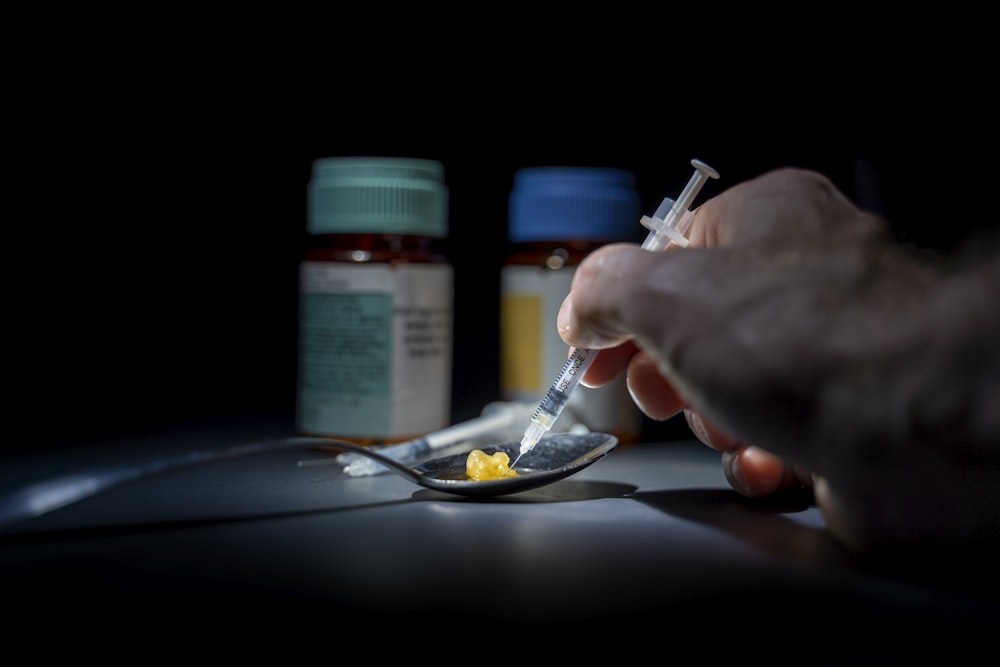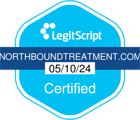The opioid epidemic has taken the United States by storm in recent decades. Both prescription and street drugs have contributed to high levels of addiction and overdose.1 Here, we’ll explore the difference between opiates and opioids, the role that prescription drugs play in the opioid epidemic, how to tell if someone you love is misusing opioids, what to do if you or someone you care about may be experiencing an opioid overdose, and how treatment can lead to recovery from opioid addiction.
Opioids and opiates: What’s the difference?

Opioids are a class of substances that interact with the opioid receptors in the brain and body.2 Opioids are often prescribed as painkillers for their ability to both relieve pain and dull the senses. Opiates are natural substances that are derived from the poppy plant.3 Opium, codeine and morphine are all opiates. Opiates are a type of opioid.4
Opioid is a broad term that includes natural opiates, semisynthetic opioids, and completely synthetic opioids that are created in a lab. In addition to the natural opiates mentioned above, opioids include semisynthetic substances such as hydromorphone, hydrocodone, oxycodone and heroin. Synthetic opioids include methadone and fentanyl.5
Prescription painkillers: Legal opiates/opioids
Many people who struggle with addiction to opioids never intended to use drugs in a way other than as prescribed by their doctor. When opioids are used for pain, it can become harder and harder to get the same effect. Many people find that they need opioids in order to simply feel normal. They may take more of the drug than their doctor prescribed, or take their medication more often than directed.
Studies have shown that after using opioids for just five days, the likelihood of continuing to use the drug a year later begins to increase.6 Even after the issue that originally caused the pain is gone, some people become addicted to the dopamine release caused by opioid use. Even when the person wants to stop taking the drug, it can feel impossible due to the brain’s reward system positively reinforcing continued use.2
In addition to the positive feelings experienced with continued opioid use, the stressful and painful effects of withdrawal can also cause people to continue to use, even when they want to stop.7 Some people may feel embarrassed that they’ve become addicted to the drug and try to fight through withdrawal on their own instead of talking to their doctor about how to safely manage withdrawal symptoms.
Do you think someone you love is using opiates? Signs and symptoms of opiate addiction

It can be tough to know for sure if someone you love is using opioids in a way other than how they’ve been prescribed by a doctor, or if someone is using illegally purchased opioids.
Signs of opioid addiction may include:8
- Changes in eating, sleeping or grooming habits.
- Obtaining opioid prescriptions from multiple doctors.
- Decline in school or work performance.
- Mood changes.
- Changing groups of friends or isolating from friends.
- Constricted pupils even in dark areas, slurring words, or nodding off at odd times.
- Stealing money or valuables; making excuses for constantly being behind on bills even with a steady source of income.
If you think that someone you love may be struggling with addiction to opioids, let that person know that you’re there to help. Talk with the person openly, and explain that you’re concerned, not angry. Someone who is using opioids may struggle to admit that there’s a problem and may take some time to open up to you about the issue. Be understanding, and offer to help the person talk to a doctor and/or find an appropriate treatment facility.
Opiate overdose: What you need to know
It’s important to understand the signs of an opioid overdose. This condition can quickly turn fatal.9 There are lifesaving treatments that can work to reverse an overdose.
Signs of opioid overdose include:10
- Inability to waken; unconsciousness.
- Difficulty breathing, including choking sounds.
- Shallow or slow breathing.
- Pinpoint pupils.
- Fingernails and/or lips turning blue.
If you think that someone you love is experiencing an opioid overdose, it’s essential that you administer naloxone (brand name Narcan) right away.9 If you do not have naloxone on hand, call 911 immediately. Naloxone blocks the effects of opioids and can be lifesaving. After naloxone is administered, be sure to call 911 right away. While naloxone works well for opioid overdoses, its effects only last a short time. It’s possible that the naloxone could wear off before the effects of the opioid, causing the person to fall into overdose again.
Opiate addiction treatment
For many people who struggle with addiction and are ready to enter treatment, detox is the first step of the process. Unlike other types of withdrawal, opiate withdrawal is unlikely to cause death. However, the process of detoxification can be extremely uncomfortable without medical treatment. Many people find that they struggle to get through the withdrawal process and turn back to opiate use, usually with the intention of only using enough to offset withdrawal symptoms. This can often set off a downward spiral back into use.
Withdrawal symptoms may include:6
- Dilated pupils.
- Goosebumps.
- Chills and sweating.
- Nausea.
- Abdominal cramps and vomiting.
- Runny nose and teary eyes.
- Insomnia.
- Anxiety and agitation.
There’s no need to go through opiate withdrawal alone. A medical detox team can provide medications and comfort that can make it easier to get through the process. Going through detox in a professional care setting makes it far less likely that the person receiving treatment will return to drug use, as the drug simply is not in close proximity.
After the detox phase is complete, many people who are struggling with addiction move forward to inpatient treatment. During inpatient treatment, patients live at the care facility and have access to 24-hour treatment. Inpatient treatment can provide a safe haven from the pressures, triggers and stressors of everyday life, making it easier to fully focus on recovery. Living at the facility also allows people who are receiving treatment to bond with others who are at a similar stage in their recovery. Addiction can feel isolating, and knowing that others are in the same place in the process can allow the healing process to begin on a deep level.
If you’re not able to attend inpatient treatment, outpatient treatment can also be a viable option. During outpatient treatment, patients don’t live at the facility. Instead, they travel to the facility each day to receive intensive treatment. People who choose outpatient treatment still go through group therapy, individual therapy, and other treatment modalities that allow them to learn the skills that they need to thrive in sobriety.
Talking with a counselor or health care professional may be the first step in helping patients decide whether inpatient or outpatient treatment is a better fit for the start of their recovery process.
Support after rehab for opiate addiction
The completion of formal treatment is just the beginning of the recovery process. A multifaceted aftercare plan is vital for long-lasting sobriety. Aftercare may consist of several therapeutic modalities, including individual therapy, group therapy, family therapy, 12-step meetings, exercise/nutritional therapy, and more.
The effects of opioid addiction can be long-lasting, and some people require medication-assisted treatment, or MAT, to maintain long-term sobriety.11 Medications such as naltrexone, buprenorphine and/or methadone can work to counteract some of the effects that addiction takes on the mind and the body to ease the burden of recovery. It’s important that the use of these medications is supervised closely. While most people use these medications within their doctor’s recommendation, Suboxone (a combination of buprenorphine and naltrexone) does have the potential for misuse.
While relapse does happen for some people who are in recovery, following a comprehensive aftercare plan can decrease the likelihood of returning to opioid use. It’s important for people who are in recovery to regularly revisit their aftercare plan to ensure that they’re continuing to meet their mental, social and emotional needs to lower the risk of relapse.
We’re here for you – reach out today
If you’ve been struggling with addiction to opioids, you’re not alone. No matter how far gone you may think you are, recovery is possible. At Northbound Treatment, we offer many options to help you begin to get your life back. You deserve a healthy, happy, sober life, and we’ll be there with you every step of the way. Reach out to us today to learn how we can help you begin the path to recovery.
Sources:
National Institute on Drug Abuse (2020). Prescription Opioids DrugFacts
Drug Enforcement Administration Museum. Opium Poppy: History.
Johns Hopkins Medicine. Opioid Addiction.
United States Drug Enforcement Administration. Narcotics (Opioids).
Mayo Clinic (2018). How opioid addiction occurs.
United States Public Health Service (2018). Facing Addiction in America.
National Institute on Drug Abuse. Opioid Overdose Crisis.
National Institute on Drug Abuse. Opioid Overdose Reversal with Naloxone.
National Institute on Drug Abuse (2018). Principles of Drug Addiction Treatment: A Research-Based Guide (Third Edition).





